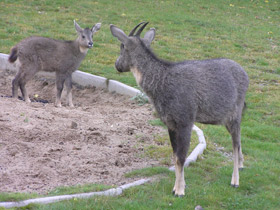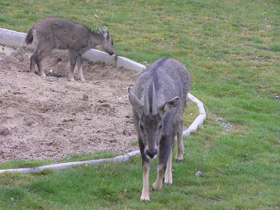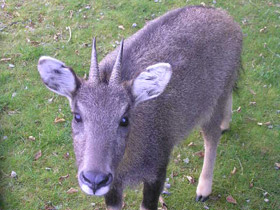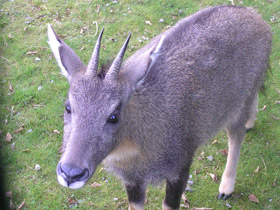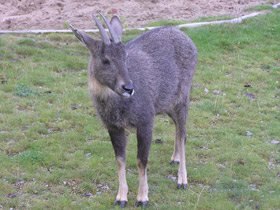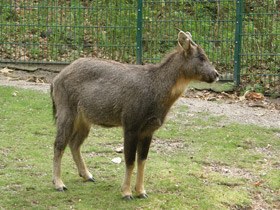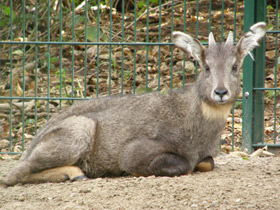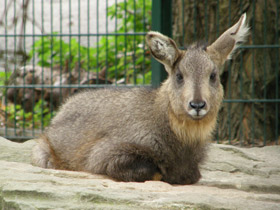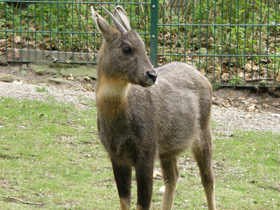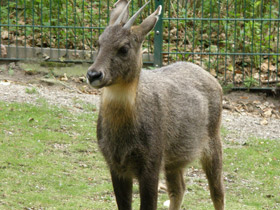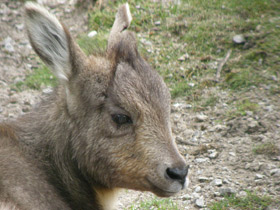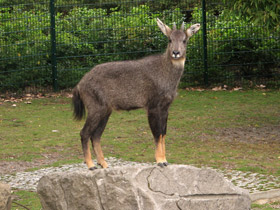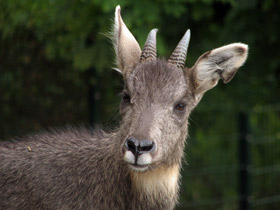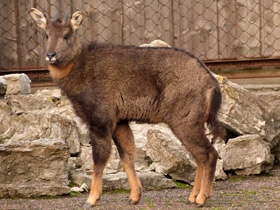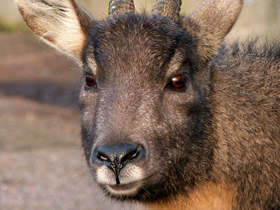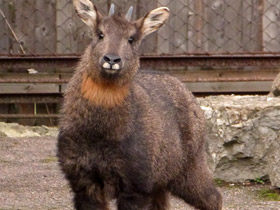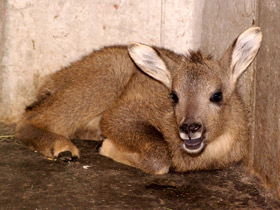Gorals Nemorhaedus
Chinese goral Naemorhedus griseus arnouxianus
The gray goral Nemorhaedus goral
The gray goral, also known as the Himalayan goral, inhabits steep mountain areas and sometimes uses evergreen forests near cliffs at altitudes of up to 4,000 meters above sea level. These animals are found across the Himalayas including Bhutan, China (southern Tibet), India, Nepal, northern Pakistan, and Myanmar. The gray goral is a medium-sized animal with stocky body. Its appearance resembles that of a goat. Gorals typically weigh up to 40 kg, stand 75 cm at the shoulders, and average 120 cm in length. Both males and females bear short, backward-facing horns with transverse rings. Winter coat is long and dense, while summer coat is shorter and thinner. These animals live either solitary or in small groups. When startled, the goral produces hissing sounds and promptly whisks into rocky neighbourhood for hiding. Gorals are not adapted for long running, but can dextrously move along steep slopes, making 2-3-meter long leaps. These mountain ungulates feed on grasses, nuts, twigs, leaves, acorns and other fruits, switching on land and tree lichens, leaves of coniferous trees, and mushrooms in winter time, when food is scarce. Gorals reach sexual maturity by the age of 2.5 years but the males normally do not start breeding until they are three or even four years old. The reason is that young males are not able to win the fight with a strong older ram, although males do not actively compete for females since these animals have comparatively fixed home territories. The rutting season begins in late October and lasts till the end of December, with the peak occurring in November. Gorals are polygamous animals and in contrast to many other ungulates, they do not establish harems. Their polygamy is related to the fact that the home range of solitary male typically includes home territories of several females. One calf, rarely twins, is born after a gestation period of 7 to 7.5 months. Calving occurs in the late spring or early summer. In this period the females are staying away from other gorals, with the exception of the juveniles born in the last year. During the first month of their life, the calves lie quietly in a shelter, leaving it only for nursing and returning to the shelter after the mother licks her offspring over. This period is referred to as hiding. The calves start grazing on their own and following their mothers only by the end of the second month of life. Young males stay with their mothers until they are 1.5 years old, while young females may not separate themselves from the mother for three years. In most range states populations of the goral are legally protected; this species is included in “near threatened” category of the IUCN Red List of Threatened Species.

















